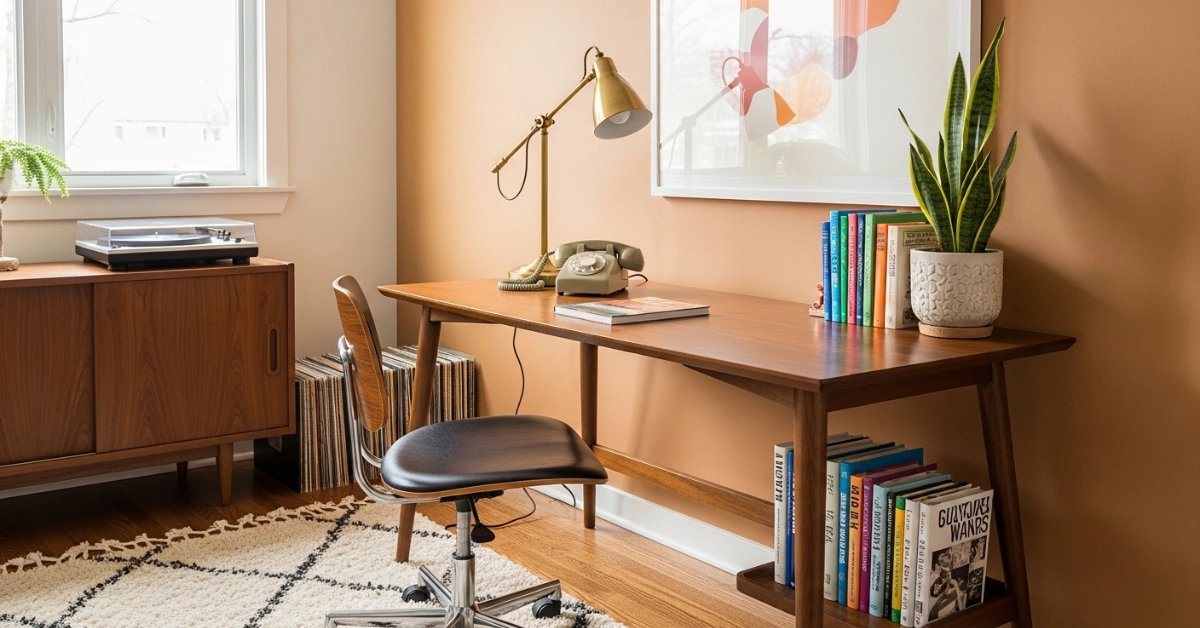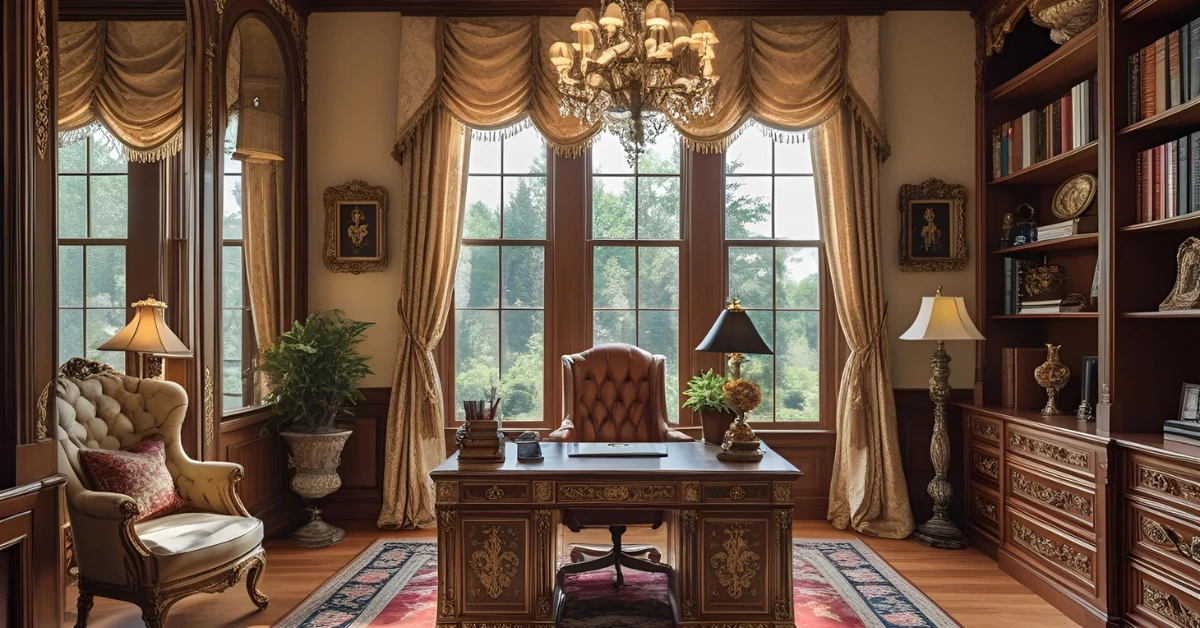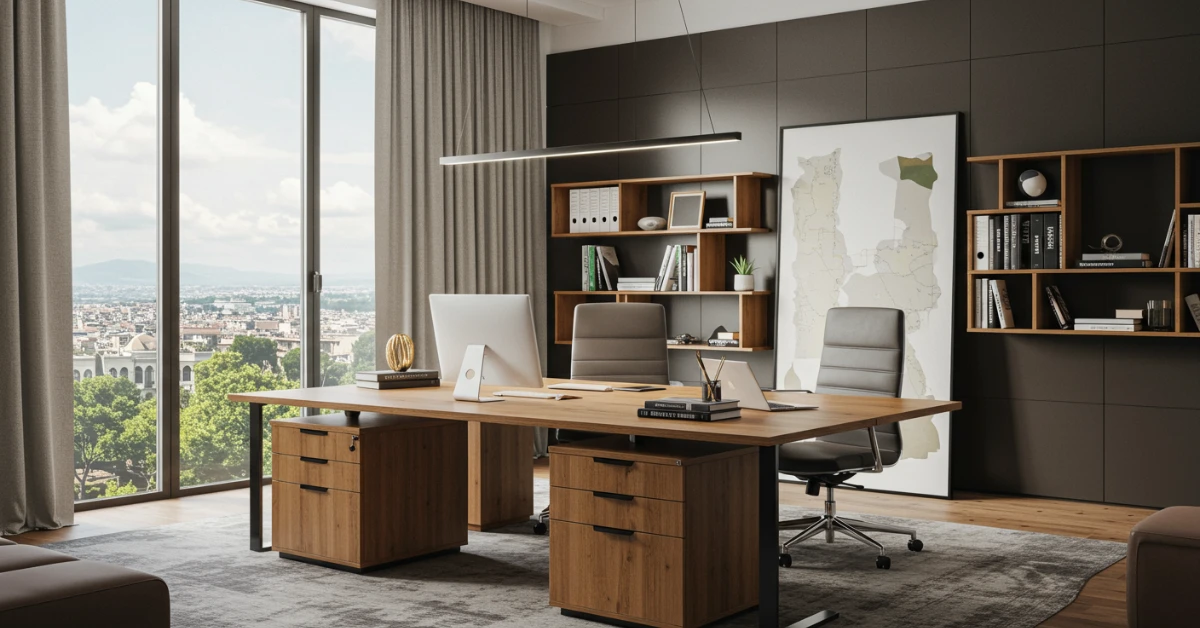Mid-Century Office Decor: Timeless Style for Your Workspace

Creating an office that inspires productivity and reflects personal style can be challenging. Many struggle with cluttered, uninspiring workspaces that feel dated or lack personality, making it hard to focus or feel motivated. Mid-century office decor offers a perfect solution, blending timeless elegance with functional design to craft a workspace that’s both stylish and practical. In this guide, we’ll explore how to transform your office with mid-century modern aesthetics, offering practical tips, design ideas, and inspiration to elevate your workspace.
This article dives deep into the world of mid-century office decor, providing actionable advice to help you create a professional yet inviting environment. From furniture choices to color palettes and accessories, we’ll cover everything you need to know to achieve a cohesive, stylish office that stands the test of time.

What Is Mid-Century Office Decor?
Mid-century modern design, originating in the 1940s to 1960s, is characterized by clean lines, organic shapes, and functional elegance. Rooted in the post-World War II era, this style emphasizes simplicity, natural materials, and a balance between form and function. According to the Metropolitan Museum of Art, mid-century design was heavily influenced by designers like Charles and Ray Eames, who prioritized innovative materials and accessibility in furniture design.

In an office setting, mid-century office decor translates to sleek desks, sculptural chairs, and warm wood tones paired with bold accents. The style avoids excess ornamentation, focusing instead on pieces that are both beautiful and practical. This makes it ideal for modern workspaces, where aesthetics and productivity go hand in hand.
Why Choose Mid-Century Office Decor?
Mid-century office decor is more than a trend, it’s a timeless approach that suits various office types, from home setups to corporate spaces. Here’s why it’s a smart choice:
- Timeless Appeal: The clean, uncluttered look ensures your office stays stylish for years.
- Versatility: Works in small home offices or large professional spaces.
- Functionality: Prioritizes ergonomic furniture that supports long work hours.
- Inspiration Boost: Warm tones and organic shapes create a welcoming, creative environment.

Interior designer Sarah Johnson, who specializes in mid-century aesthetics, notes, “This style brings warmth and personality to offices without sacrificing professionalism. It’s perfect for anyone wanting a space that feels curated yet approachable.”
Key Elements of Mid-Century Office Decor
To create an authentic mid-century office, focus on these core elements:
1. Furniture with Clean Lines and Organic Shapes
Mid-century furniture is the backbone of this style. Look for pieces with:
- Sleek Silhouettes: Desks with tapered legs or rounded edges.
- Natural Materials: Wood (teak, walnut, or oak) paired with metal or leather.
- Iconic Designs: Think Eames chairs, Saarinen tables, or Wegner-inspired desks.

For example, a walnut desk with angled legs paired with an Eames-style molded chair instantly sets the tone. These pieces are both functional and visually striking, making them ideal for a productive workspace.
2. Warm, Neutral Color Palettes
Mid-century office decor leans on earthy tones like mustard yellow, olive green, and terracotta, balanced with neutrals like cream, gray, or white. Use these colors strategically:
- Walls: Opt for soft gray or warm beige to keep the space bright.
- Accents: Add pops of color through rugs, cushions, or artwork.
- Furniture: Choose wood tones for warmth, avoiding overly dark finishes.

A personal example: In my home office, I paired a teak desk with a mustard yellow chair cushion, creating a vibrant yet professional vibe that sparks creativity.
3. Functional Accessories
Accessories in mid-century office decor should serve a purpose while enhancing the aesthetic. Consider:
- Sculptural Lamps: Arched floor lamps or geometric desk lights.
- Minimalist Storage: Floating shelves or low credenzas in wood.
- Textured Rugs: Wool or jute rugs with abstract patterns.

Designer tip: “Choose accessories that double as organizational tools, like a sleek pen holder or a modular shelving unit,” says interior designer Mark Thompson. This keeps your office clutter-free and stylish.
4. Bold Yet Balanced Patterns
Mid-century design often incorporates subtle patterns, such as geometric shapes or abstract motifs. Use these sparingly:
- Curtains or Upholstery: Opt for fabrics with simple, repeating patterns.
- Artwork: Hang prints inspired by mid-century artists like Alexander Calder.
- Rugs: Choose designs with soft curves or bold lines to tie the room together.

Avoid overloading the space with patterns to maintain the clean, uncluttered look central to mid-century style.
How to Design Your Mid-Century Office: Step-by-Step Guide
Ready to transform your workspace? Follow these steps to create a stunning mid-century office decor setup.
Step 1: Choose the Right Furniture
Start with a statement desk and chair. A teak or walnut desk with tapered legs is a classic choice. Pair it with an ergonomic chair, like a molded fiberglass seat with wooden legs. For additional seating, consider a lounge chair for client meetings or brainstorming sessions.

Example: The Herman Miller Eames Lounge Chair, though pricey, is a timeless investment. Budget-friendly replicas are widely available and maintain the iconic look.
Step 2: Set the Color Scheme
Select a color palette that balances warmth and neutrality. A popular combination is:
- Base Color: Warm gray or off-white walls.
- Accent Colors: Mustard yellow, teal, or burnt orange in accessories.
- Wood Tones: Medium to dark wood for furniture.

For instance, painting your walls a soft gray and adding a teal rug creates a cohesive, inviting look.
Step 3: Add Lighting
Lighting is crucial in mid-century office decor. Opt for:
- Desk Lamps: Sculptural designs with metallic or ceramic bases.
- Floor Lamps: Arched lamps that cast soft, ambient light.
- Natural Light: Use sheer curtains to maximize daylight.

A real-world example: In a client’s office redesign, we installed a brass arched floor lamp, which became the focal point of the room while providing functional lighting.
Step 4: Incorporate Storage Solutions
Keep your office organized with mid-century-inspired storage:
- Credenzas: Low, wooden cabinets for files or supplies.
- Floating Shelves: Perfect for books, plants, or decorative items.
- Bookcases: Opt for open designs with asymmetrical compartments.

Tip: Use woven baskets or ceramic containers on shelves to add texture while hiding small items.
Step 5: Personalize with Accessories
Add personality with carefully chosen accessories:
- Plants: Potted ferns or snake plants for a touch of greenery.
- Artwork: Abstract prints or retro-inspired posters.
- Clocks: Wall clocks with simple, bold designs.

Designer Lisa Carter suggests, “Incorporate one or two statement pieces, like a bold clock or a unique vase, to avoid overwhelming the space.”
Mid-Century Office Decor Ideas for Different Spaces
Whether you’re designing a home office, a corporate workspace, or a small corner desk, mid-century office decor adapts beautifully. Here are tailored ideas for various settings:
1. Home Office
A home office should feel personal yet professional. Try:
- Compact Desk: A narrow walnut desk for small spaces.
- Bold Accents: A mustard yellow chair or teal rug.
- Wall Art: Hang a single large abstract piece for impact.

Example: In my own home office, I used a small teak desk with a retro typewriter and a potted plant, creating a cozy yet functional space.
2. Corporate Office
For a professional setting, focus on sophistication:
- Executive Desk: A large walnut desk with clean lines.
- Seating: Leather-upholstered chairs for comfort and style.
- Lighting: A statement chandelier or oversized floor lamp.

A corporate office I helped design featured a walnut credenza and leather chairs, giving the space a polished, mid-century vibe.
3. Small Corner Office
Maximize limited space with:
- Wall-Mounted Desk: Saves floor space while looking sleek.
- Floating Shelves: For storage and display.
- Compact Chair: A molded plastic chair with wooden legs.

Tip: Use a round mirror above the desk to make the space feel larger.
Common Mistakes to Avoid in Mid-Century Office Decor
While mid-century office decor is versatile, it’s easy to make mistakes. Here’s what to avoid:
- Overloading with Patterns: Stick to one or two subtle patterns to maintain simplicity.
- Ignoring Ergonomics: Choose chairs and desks that support long work hours.
- Using Too Many Colors: Limit your palette to 2–3 accent colors.
- Cluttering the Space: Keep surfaces clean and accessories minimal.
Interior designer Emily Rogers advises, “Less is more in mid-century design. Focus on quality pieces that speak for themselves.”
Budget-Friendly Mid-Century Office Decor Tips
You don’t need a big budget to achieve this look. Here are cost-effective ideas:
- Shop Secondhand: Check thrift stores or online marketplaces for vintage mid-century pieces.
- DIY Projects: Refinish an old wooden desk with a walnut stain.
- Budget Brands: Retailers like IKEA and Target offer mid-century-inspired furniture at affordable prices.
- Mix and Match: Combine high-end pieces with budget finds for a curated look.

For example, I once found a vintage teak chair at a flea market for $50, refinished it, and paired it with a modern desk for a stunning effect.
Comparison: Mid-Century Office Decor vs. Other Styles
To highlight why mid-century office decor stands out, here’s a comparison with other popular office design styles:
| Style | Key Features | Pros | Cons |
|---|---|---|---|
| Mid-Century Modern | Clean lines, wood tones, bold accents | Timeless, versatile, functional | Can be expensive for authentic pieces |
| Minimalist | Sparse, neutral, ultra-simple | Clean, distraction-free | May feel cold or impersonal |
| Industrial | Raw materials, metal, exposed textures | Durable, edgy | Can feel too rugged for offices |
| Traditional | Ornate, heavy wood, classic patterns | Luxurious, formal | Often feels dated or heavy |
Mid-century office decor strikes a balance between style and practicality, making it ideal for modern workspaces.
Where to Shop for Mid-Century Office Decor
Finding the right pieces is key. Here are trusted sources:
- High-End Retailers: West Elm, Herman Miller, Design Within Reach.
- Budget-Friendly: IKEA, Target, Wayfair.
- Vintage Shops: Etsy, Chairish, or local flea markets.
- Custom Options: Local carpenters for bespoke desks or shelves.

Tip: Always check dimensions to ensure furniture fits your space, especially for small offices.
Conclusion: Create Your Dream Mid-Century Office
Mid-century office decor offers a perfect blend of style, functionality, and timeless appeal. By focusing on clean lines, warm tones, and thoughtful accessories, you can create a workspace that inspires productivity and reflects your personality. Whether you’re revamping a home office or designing a corporate space, the principles of mid-century design ensure a polished, professional look that never goes out of style.
Ready to transform your office? Start by selecting one statement piece, like a walnut desk or an iconic chair, and build your design around it. Share your mid-century office decor journey in the comments below or explore our recommended retailers to find the perfect pieces for your space!






